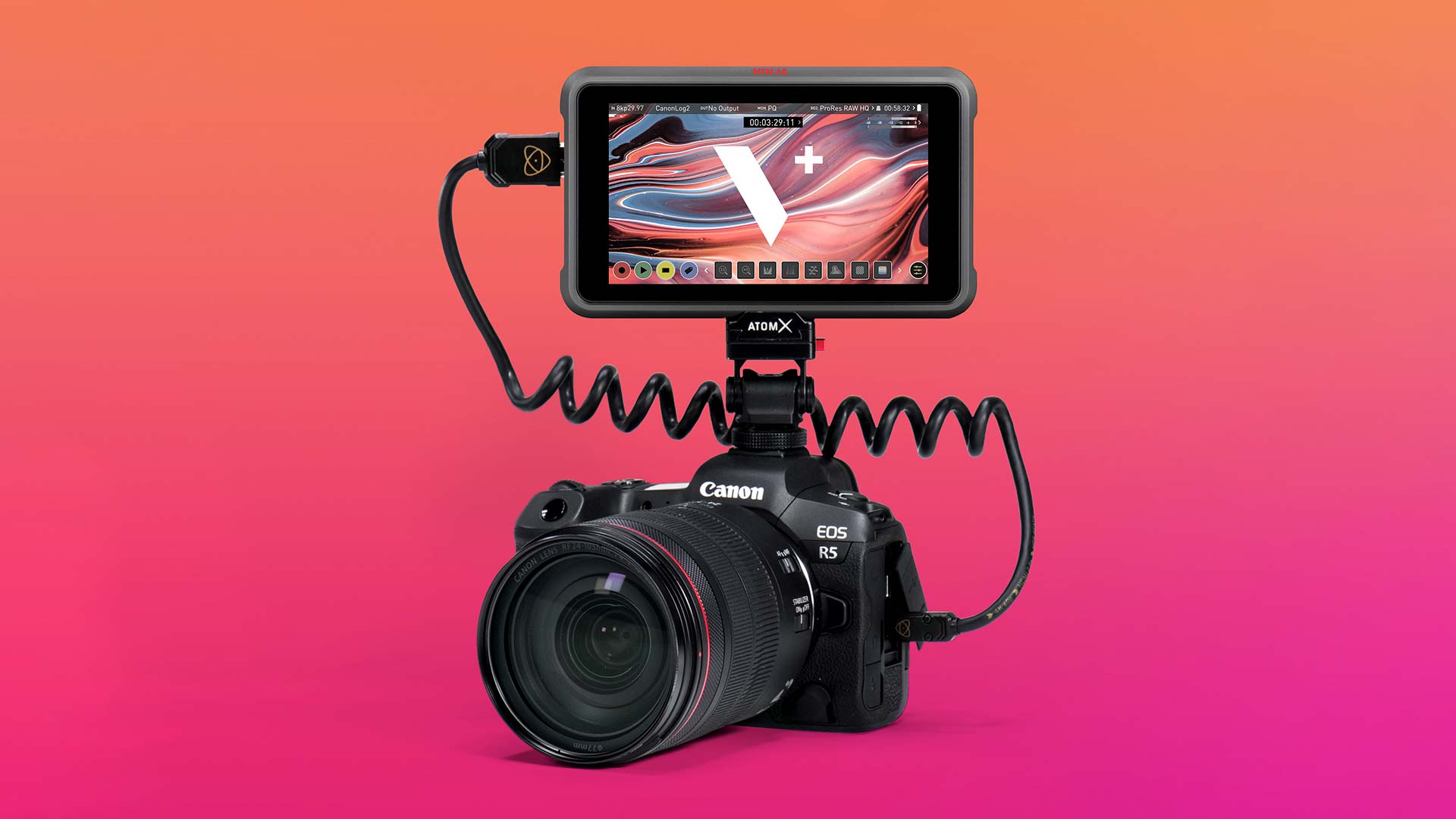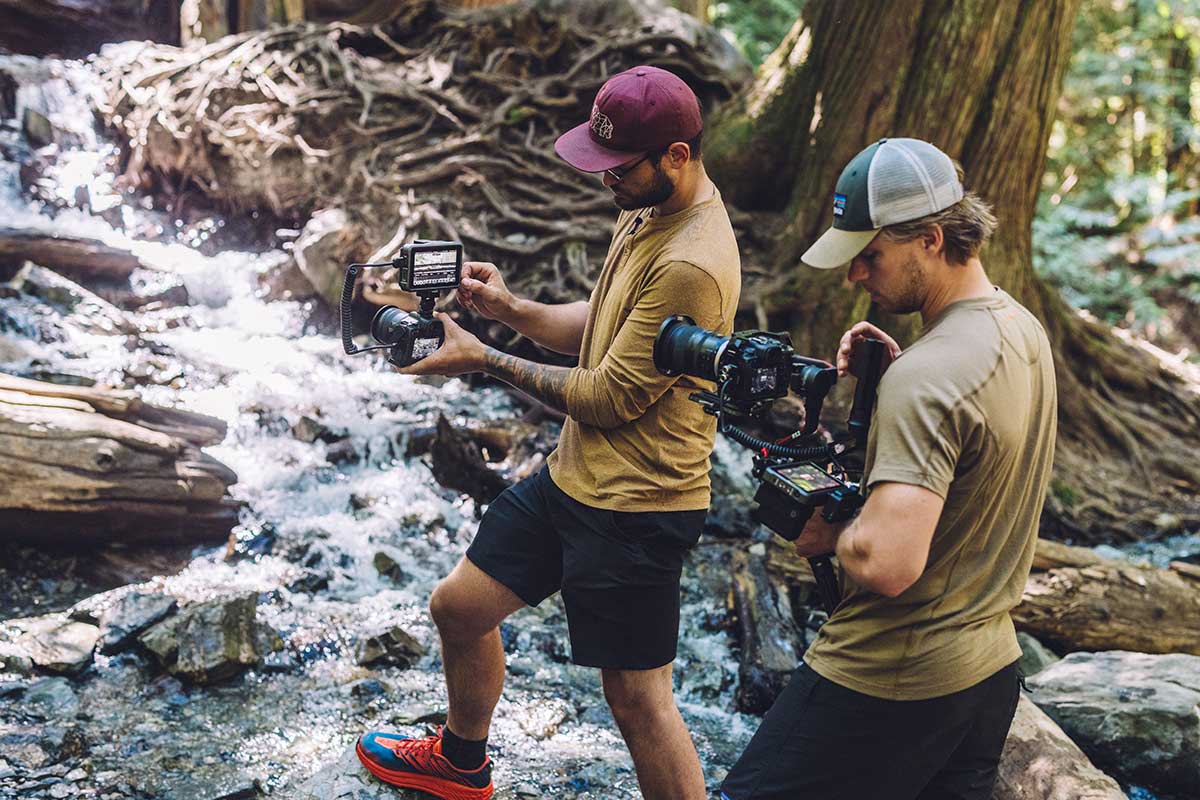
Atomos has announced that the Ninja V+ can now record 8K from the Canon EOS R5, potentially making it the most portable 'IMAX' capable camera in existence.
Canon’s EOS-R5 has been headlining the world of affordable access to full-frame, 8K acquisition more or less since its release, recording H.264 or H.265 files to internal storage. It’s hard to argue against the idea of making the best possible recording of such a capable sensor, and with that in mind Atomos has announced 8K ProRes RAW recording capability with the EOS R5 on its Ninja V+.
This is analysis of the released information, not a review (coming shortly) but the resulting combination of equipment might reasonably be expected to produce pictures suitable for applications as demanding as IMAX, and at a size and weight that makes drone operations easier – or at least more affordable and longer-lasting.
The recording capability packs up to forty minutes of video onto a terabyte of storage, theoretically equivalent to a data rate of about 417 megabytes per second. It takes either SSDs or, via a physical adaptor, CFast 2 cards. The company is qualifying specific cards on the basis that while 450-ish megabytes per second is not a particularly challenging peak load for most flash storage devices, some of the less-expensive options will choke if asked to do it long-term.

The EOS R5 and Ninja V+ being put through their paces on a remote shoot. Image: Atomos.
Number crunching and custom chips
Given the 8224 by 4336 image size, and assuming a single plane of Bayer-pattern sensor data and the 12-bit depth of ProRes raw, each frame is about 51MB in size, uncompressed, and a 30fps stream should be about 1.5GB. The compression ratio is therefore a hair over 3:1, which seems reasonably healthy. It will also record 5K at up to 60fps. Three-to-one compression as a rule of thumb for high-quality work goes all the way back to the earliest days of nonlinear editing, with standard-definition systems often using MJPEG compression. That has at least something in common with the sort of mathematics underlying ProRes, though ProRes is proably a bit smarter about it
Atomos is keen to present the Ninja V+ itself as more of a miniaturised version of its larger, traditionally more capable Shogun range, as opposed to a continuation of the pocket-sized, lower-cost Ninja range, though the Ninja V+ has the same 5” display size. With that higher-end clientele in mind, the company has finished the device in a colour it refers to as “stealth grey,” and when we learn that it’s calling the new custom semiconductors inside as “Atomos Silicon” the (perhaps fractionally pretentious) Apple parallels become difficult to overlook.
The big news here is that Atomos’s custom chips represent a big and important step away from the programmable-logic approach that has so far been common to most of what it, and companies like Blackmagic, do. Programmable logic is something we’ve discussed before, but briefly, it involves devices like field-programmable gate arrays – FPGAs – which contain a large field of individual digital logic gates. These can be connected together in any way the designer finds convenient to create complex devices such as video encoders. This is why it’s possible for firmware updates to add significant new features to FPGA-based devices.
It also makes development significantly – significantly – less expensive. Building a custom microchip – an application-specific integrated circuit, or ASIC – to do the same job as an FPGA that could handle modern video workloads is a seven-figure operation. That said, FPGAs are individually expensive to buy and tend to consume a lot more power than an ASIC doing the same work. That power consumption may require bulky heatsinks, noisy fans and big batteries, all things we don’t need. It isn’t clear exactly to what degree the company has moved away from programmable logic, and it’s at least possible a hybrid approach is in use, but we might hope that these changes to the underlying technology should have a positive effect on power consumption, thermal performance, noise and cost. Atomos cites in its notes that the Ninja V may still get pretty hot, which isn’t unreasonable given the amount of data it’s handling, and especially since it has a 1000-nit HD display.
The Ninja V+ is to sell for around US$1500, which seems a pretty reasonable price given that it allows a shockingly affordable 8K, full-frame camera system to be built around the R5. We’ll figure out if you can fry eggs on it once one becomes available for review.
Tags: Production News 8K External monitors


Comments